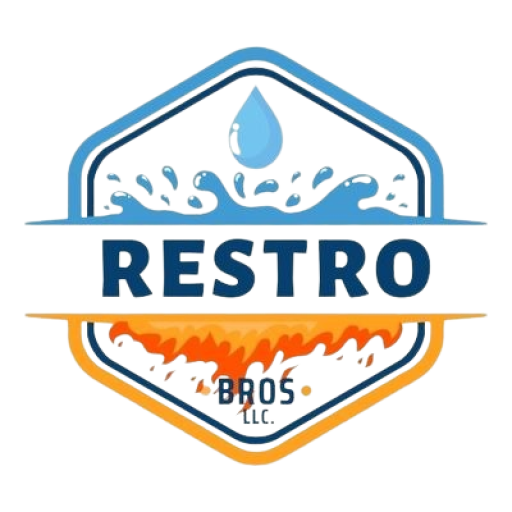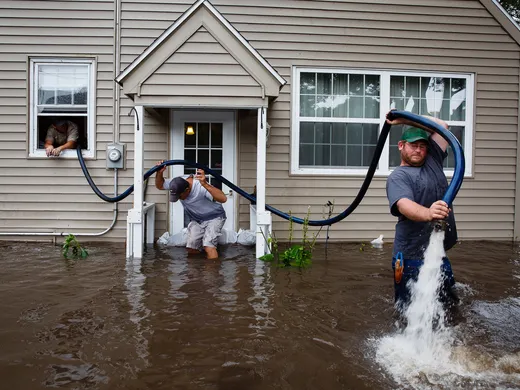Flooding can cause significant damage to homes, leading to structural issues, mold growth, and loss of personal belongings. Effective water cleanup after a flood is crucial to prevent further damage and restore your home. In this article, we will walk you through the essential steps of handling water cleanup after a flood, from immediate actions to long-term prevention.
Why Immediate Action Is Crucial
Floodwater, even if it’s only a few inches deep, can lead to extensive damage. The longer the water sits, the more difficult it becomes to clean up and the higher the risk of mold growth and permanent damage to your home. Fast action is essential to minimizing the effects of flooding.
Step-by-Step Guide to Water Cleanup After a Flood
1. Ensure Safety First
Before beginning any cleanup, safety is the top priority. Follow these steps:
- Turn Off the Power: If it is safe to do so, turn off the power at the circuit breaker to avoid electrical shock from water touching electrical outlets or appliances.
- Avoid Contaminated Water: Floodwaters can contain harmful bacteria, sewage, and chemicals. Always wear rubber boots, gloves, and a mask to protect yourself.
- Check Structural Integrity: Ensure that the structure of your home is safe to enter. If you’re unsure, consult with a professional before proceeding.
2. Stop the Flow of Water
If the flood is caused by a broken pipe, leaky roof, or other controllable source, stop the flow of water as soon as possible. For example, shut off the main water supply if the issue is plumbing-related. If the flood is due to heavy rain, try to redirect the water flow using sandbags or barriers to prevent further entry into your home.
3. Remove Standing Water
The next step is to remove standing water as quickly as possible. Depending on the severity of the flood, you can use the following methods:
- Use a Pump: For large amounts of standing water, consider using a sump pump or submersible pump to remove the water quickly. These pumps can move water efficiently and reduce the risk of mold growth.
- Use Wet/Dry Vacuums: For smaller amounts of water or in areas that are harder to reach, a wet/dry vacuum can be very effective at sucking up excess water.
- Towels and Mops: For minor flooding, simply using towels and mops may suffice to absorb water and wipe up the remaining moisture.
4. Dry the Affected Area
After removing standing water, it’s time to dry the area thoroughly to prevent mold and mildew growth. Here’s how:
- Use Fans and Dehumidifiers: High-powered fans and dehumidifiers will help to dry out the wet areas faster. Place the fans near wet walls and floors to encourage air circulation.
- Open Windows: If the weather permits, open windows to allow fresh air to circulate and speed up the drying process.
- Remove Wet Materials: Carpets, furniture, and fabrics that have been soaked by floodwaters should be removed from the area. These materials can retain moisture, increasing the risk of mold growth.
5. Disinfect and Clean the Affected Areas
Floodwaters can carry bacteria, sewage, and chemicals into your home. To prevent health risks, it is essential to disinfect and clean the affected areas thoroughly:
- Use Disinfectants: Clean all surfaces that have come into contact with floodwater using disinfectants. Focus on countertops, floors, and any appliances that may have been affected.
- Wash Clothing and Bedding: If your clothes, sheets, and towels have been soaked, wash them in hot water with a disinfecting detergent.
- Clean Ducts and Vents: Flooding can introduce contaminants into your HVAC system. Clean or replace the air filters, and consider having your ducts cleaned by a professional.
6. Check for Mold Growth
Mold can start to grow within 24 to 48 hours in areas that remain damp. After the cleanup, inspect your home for signs of mold growth, particularly in hidden areas like behind walls or under carpets. If you find any mold, follow these steps:
- Remove Moldy Materials: Any porous materials, such as drywall or insulation, that have been affected by mold should be removed and replaced.
- Clean Visible Mold: Use a mixture of water and bleach to clean any visible mold on non-porous surfaces. For more extensive mold issues, it may be necessary to hire a professional mold remediation service.
7. Assess Structural Damage
Once the water cleanup is complete, assess your home for structural damage. This could include:
- Warped Wood: If your wooden floors or furniture have been warped by water, they may need to be replaced.
- Water Damage to Walls and Ceilings: Check for discoloration, cracks, or peeling paint, which may indicate water damage.
- Damage to Electrical Systems: Have a licensed electrician inspect the electrical systems in your home, especially if there was significant flooding.
8. File an Insurance Claim
If your home was flooded, it’s crucial to file a claim with your insurance company. Document all damage with photos and keep receipts for any cleanup materials or professional services. Be sure to report the damage as soon as possible to ensure your claim is processed promptly.
Preventing Future Flooding
Once the immediate cleanup is completed, consider taking steps to prevent future flooding in your home:
- Install a Sump Pump: Sump pumps help remove water from the basement or lower levels of your home, reducing the risk of flooding.
- Seal Gaps and Cracks: Ensure that windows, doors, and the foundation of your home are properly sealed to prevent water from entering during a flood.
- Clear Gutters and Downspouts: Regularly clean your gutters and downspouts to ensure proper drainage away from your home.
- Elevate Electrical Systems: Consider elevating electrical systems, such as outlets and circuit breakers, to prevent water from damaging them in the future.
Conclusion
Flooding is a stressful and overwhelming event, but with prompt action and the right tools, you can minimize the damage and restore your home. By following these steps for water cleanup after a flood, you can protect your property, prevent mold growth, and ensure that your home remains safe and livable. Remember, if the damage is extensive, don’t hesitate to contact professionals to help with the cleanup and restoration process.
FAQs
1. What should I do if my home floods?
If your home floods, the first thing to do is ensure your safety. Turn off the electricity if possible, and remove yourself from danger. Afterward, begin the water cleanup by removing standing water, drying the area, and disinfecting surfaces.
2. Can I clean up the flood damage myself?
Minor flooding can be cleaned up by homeowners with the right tools and precautions. However, if the flooding is severe, it’s best to hire professional water damage restoration services to ensure thorough cleanup and prevent long-term issues like mold growth.
3. How long does it take for mold to grow after flooding?
Mold can start to grow within 24 to 48 hours after flooding if the affected areas are not dried out promptly. That’s why it’s essential to act quickly and ensure proper ventilation and drying.
4. Should I keep wet furniture?
Wet furniture should be dried immediately to prevent mold and mildew growth. If the furniture cannot be salvaged or dried within a few days, it may be necessary to dispose of it to avoid health risks.
5. How can I prevent water damage in the future?
To prevent future water damage, ensure your home is properly sealed, maintain your gutters and downspouts, and install a sump pump in flood-prone areas. Regular inspections and maintenance can help avoid water-related issues.

